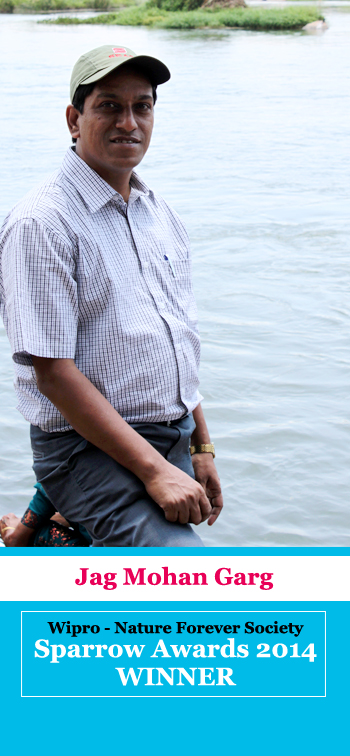



Mr. Garg having always been interested in the avifauna of India, first used photography to capture the beauty that lay around him and later decided to use the Internet to connect with people that had similar interests. On exploring, he learnt that there was hardly any e-group devoted to photographing, identification, discussion, learning etc. on Indian Flora. This is how the idea of efloraindia was first conceived.
Inspired after reading Robin Sharma’s The Monk Who Sold His Ferrari, J M Garg decided to start an online group dedicated to the discussion and identification of Indian trees. Expectedly, he had his inhibitions about this initiative since its success was totally dependent on public participation. He was concerned that people would not only have to join the group, but also participate; offering up pictures of trees for identification and, just as importantly, be prepared to identify other people’s pictures and discuss these identifications. The book gave him the faith in his idea and he learnt the value of focus, of passion & of helping others, and of a desire for excellence from it. Mr. Garg started Efloraofindia (earlier Indiantreepix) Google e-group in June, 2007. He wrote to different people and other e-groups for membership and by the end of the month Efloraofindia had around 112 messages, with a membership of around 50 members.
During the last 7 years since its beginning, he agreed to have faced numerous challenges and difficulties from time to time. But with the help of our Moderators and The Pillars, the group has been able to meet them appropriately. The e-flora model works on voluntary contribution. Mr. Garg personal believes that “the best things in life are free”. Everything that has come out of it has been a result of collective efforts from the contributions of individuals’ time, effort & passion.
Efloraofindia was initially set up as a means of identifying tree species, but it rapidly became apparent that other plants needed to be included. It currently attempts to identify not only Indian trees but shrubs, herbs, grasses and sedges, cultivated plants and flowers, mosses and liverworts, fungi etc. In this regards, Mr. Garg says he expects support from all citizens particularly Botanists/ taxonomists to extend their valuable contribution towards efloraofindia. He believes that this data is equally true for a layman as is for a botanist/ taxonomist.
He believes that it was his clear thinking that his project could see the light of day. Besides, he owes the success of efloraindia to the selfless nature of their work. Though, Mr. Garg has been working tirelessly for creating awareness of Indian Flora along with its documentation for past 7 years, on receiving the Sparrow Award, he was taken by great surprise.
About working in the field of conservation, he says, “Online learning through efloraofindia has inculcated a feeling of attachment among the members toward the Indian flora. They care more about it as a result of increased knowledge and awareness about it. The group has played a vital role in creating awareness, inculcating a scientific attitude, helping in identification, spreading knowledge and bringing it within reach of a layman, and helping in the documentation of Indian Flora.”
Due to the success of the group, around Oct.’10, Efloraofindia (eFI in short) website was created & updated on daily basis, for documenting flora of India being discussed on efloraofindia google e-group along with supplementing the working of the group. A species database has also been created here family wise & then followed genus wise. Intent of this database is compilation of all the posts on ‘efloraofindia’ e- group so that it’s useful to all concerned as all the data about a particular species will be available in a single species’ page & easily searchable. It is the largest database on net on Indian Flora with details of more than 8000 species (and with more than 1,60,000 pictures at efloraofindia e-group links).
In the coming future, he plans to add all plant species found in India either directly or through links along with their details. In addition, he wants to add around 1000 new species to efloraofindia website every year. In any case, he wants this hugely successful citizen science initiative to maintain its leadership position as the best resource on net on Indian Flora

